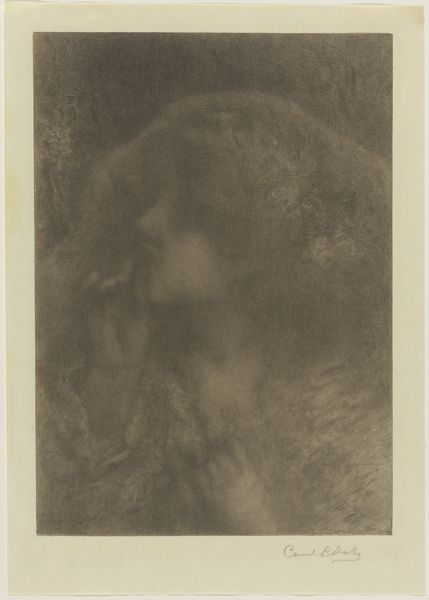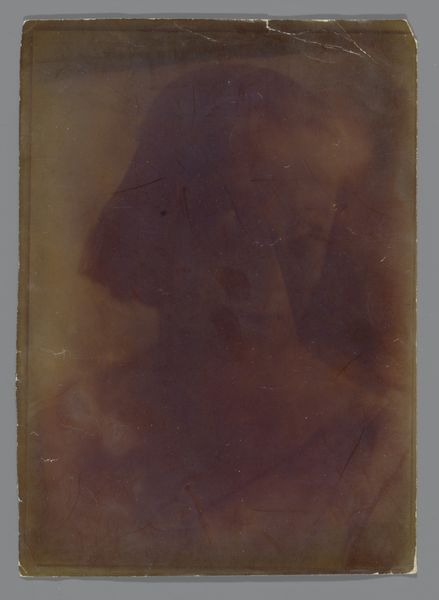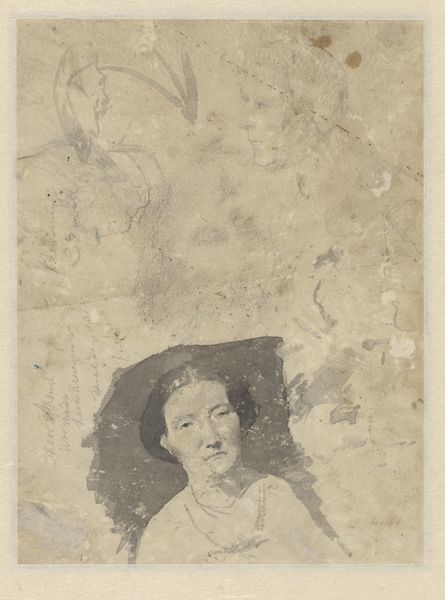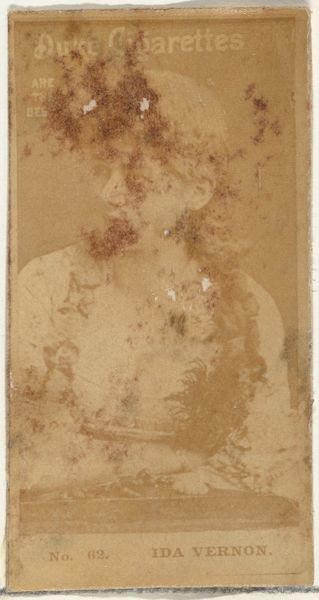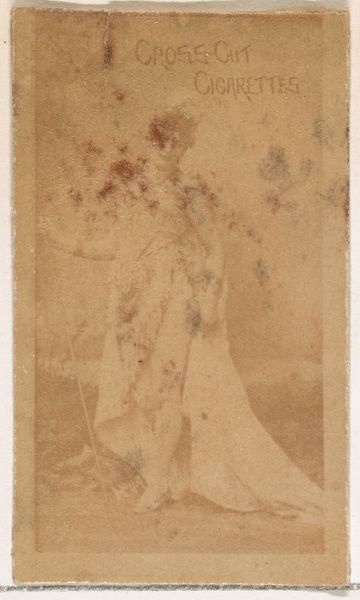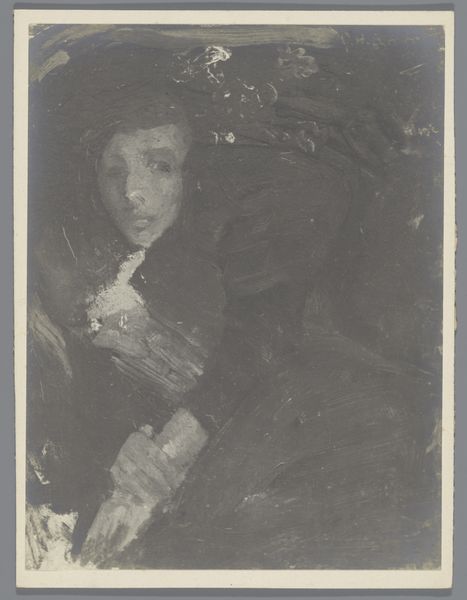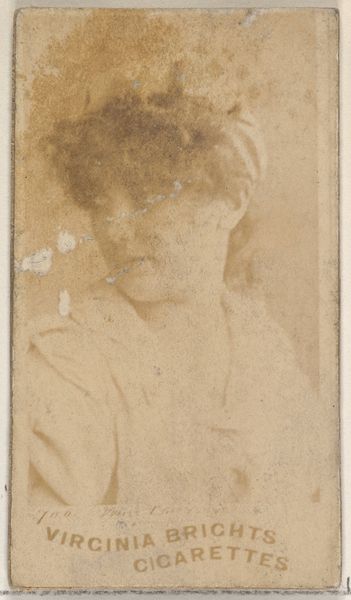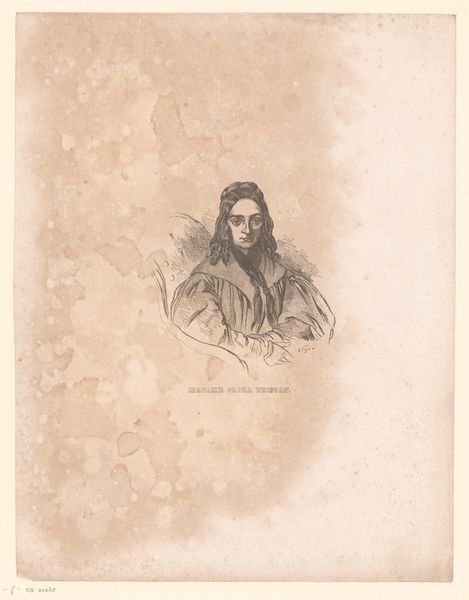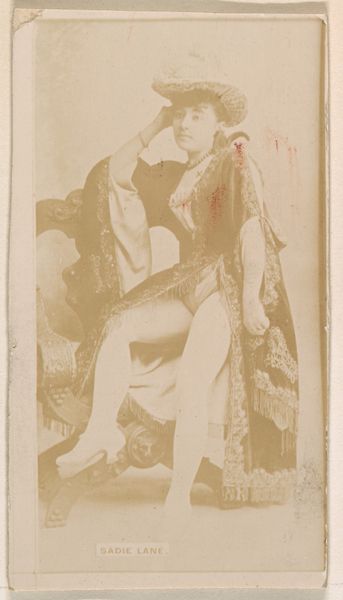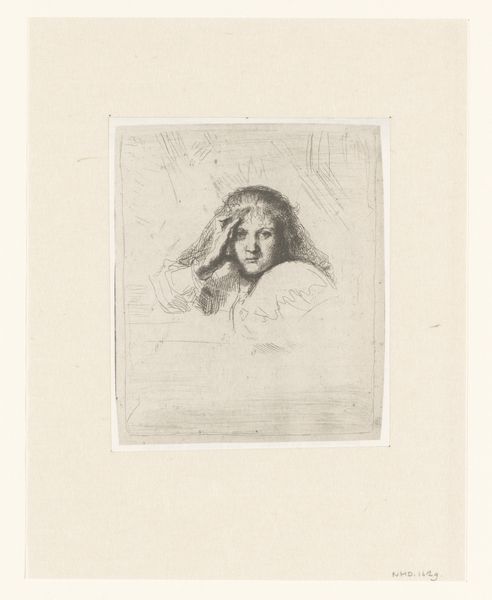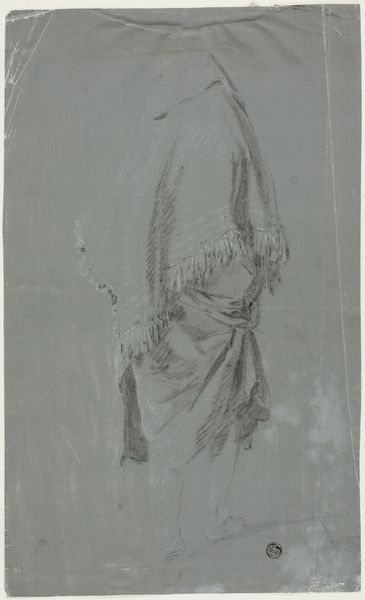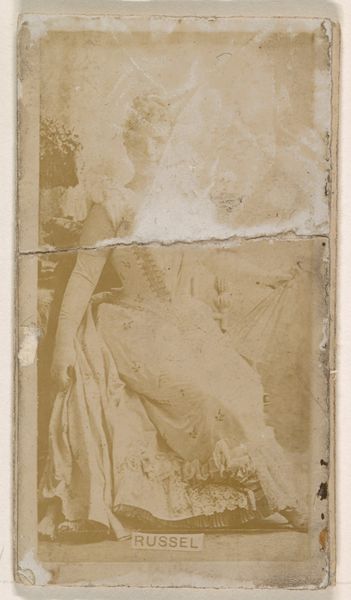
photography
#
portrait
#
pictorialism
#
photography
#
symbolism
#
nude
Dimensions: 24.5 x 19.3 cm. (9 5/8 x 7 5/8 in.)
Copyright: Public Domain
Curator: This is Joseph T. Keiley’s "A Bacchante," a platinum print made in 1899, now residing at the Metropolitan Museum of Art. It’s a prime example of pictorialism. Editor: There's a kind of frenzy to it, wouldn’t you say? A raw energy in that upturned face and wild hair… Almost a primal scream captured in sepia tones. Curator: Absolutely. Pictorialism aimed to elevate photography to the level of fine art. Keiley, and others of his cohort, manipulated the photographic process, treating the print as something to be handcrafted rather than merely reproduced. The choice of platinum is important here. Editor: Indeed. Bacchantes, followers of Dionysus, god of wine and ecstasy, are not known for demure restraint. The photograph presents a woman lost in revelry, her face a mask of wild abandon. It fits well with other Symbolist era depictions of women. Curator: And that's where the materials are vital. Platinum printing offered a wide tonal range, allowing Keiley to achieve that soft, almost dreamlike quality, but it also had its own inherent limits of labor, cost, and skill. Every touch during development contributes to this very personal statement of making a "fine art" print. Editor: Considering the source material, Keiley uses light and shadow masterfully to hint at unseen pleasures and the release of inhibitions, really channeling something powerful. You see that hand raised? A clear gesture to something happening outside the frame, almost invoking the spirit of dance. Curator: Precisely! It’s a manufactured emotion presented as photographic truth. The choice of representing ecstatic frenzy is not an accident either; consider the social anxieties of the late 19th century. I mean, even photography itself was thought to challenge established class structures. Editor: It really does draw one in. It embodies a kind of freedom, or perhaps warning, that still resonates today. So much intensity, contained within a faded print. Curator: Yes. It reveals both how carefully photography's material capabilities were deployed, and what emotional power a well chosen symbol retains over time.
Comments
No comments
Be the first to comment and join the conversation on the ultimate creative platform.
